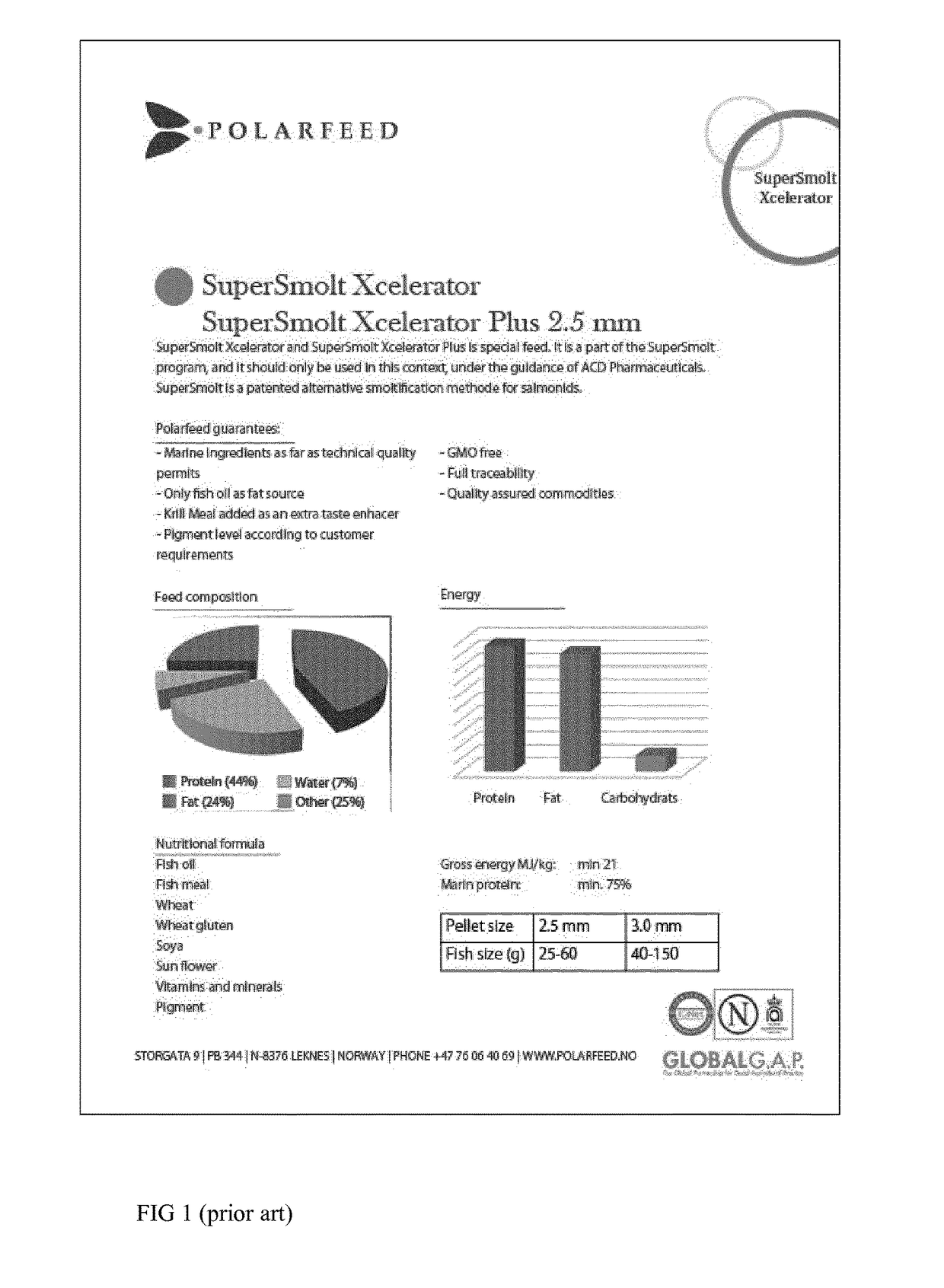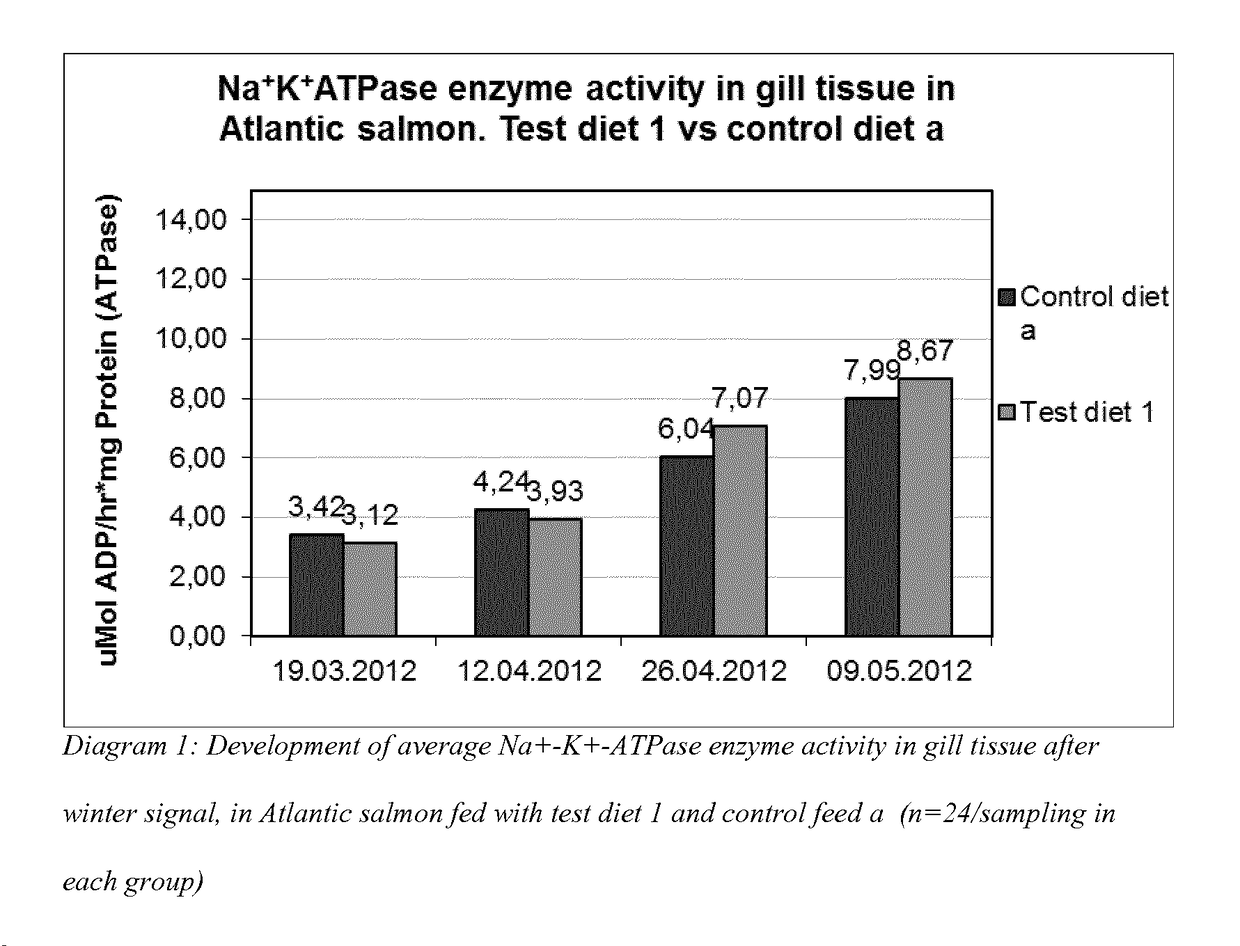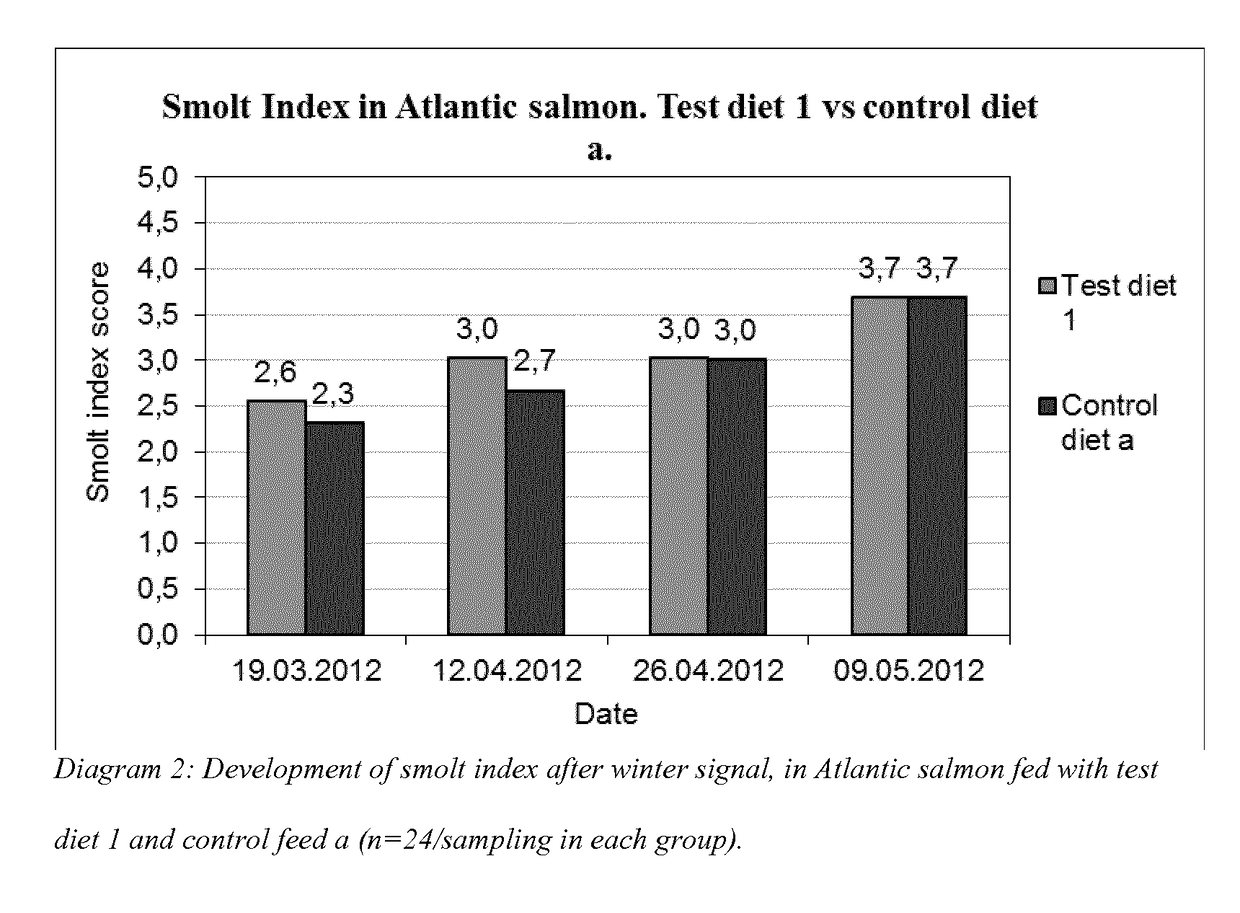A fish feed and method for smoltification and prevention of desmoltification in Salmonidae, and for prophylaxis and treatment of haemorrhagic smolt syndrome (HSS) in Salmonidae
a fish feed and salmonidae technology, applied in the field of fish feed and method for smoltification and prevention of desmoltification in salmonidae, can solve the problems of increased mortality, reduced appetite, loose scales, etc., and achieves the disadvantage of supersmolt® method and low growth rate.
- Summary
- Abstract
- Description
- Claims
- Application Information
AI Technical Summary
Benefits of technology
Problems solved by technology
Method used
Image
Examples
Embodiment Construction
[0022]According to one aspect, the present invention provides a fish feed to which is added salts (ions) and PVCR modulators (free amino acids) according to the following table 1. All of the numerical ranges specified should be considered to include the various intermediate ranges as if these intermediate ranges were explicitly mentioned, e.g., a range of 1-10 should be considered to also include 1-9, 1-8, 1-7 (etc); 2-10, 3-10, 4-10 (etc); 1-9, 2-8, (etc).
TABLE 1Free PVCR—modulatorFree aminoacid(s)1-10 g / kg feedNa+3.934-39.340 g / kg feedCl−6.202-199.020 g / kg feedCa2+0.036-36.110 g / kg feedMg2+0.026-25.530 g / kg feed
[0023]PVCR modulators include the free amino acids as here mentioned, whether used alone or in combination: Tryptophan, Tyrosine, Phenylalanine, Serine, Alanine, Arginine, Histidine, Leucine, Isoleucine, Aspartic acid, Glutamic acid, Glycine, Lysine, Methionine, Proline, Glutamine, Asparagine, Threonine, Valine, and Cysteine, in concentrations between 1-10 grams / kg fish fee...
PUM
 Login to View More
Login to View More Abstract
Description
Claims
Application Information
 Login to View More
Login to View More - R&D
- Intellectual Property
- Life Sciences
- Materials
- Tech Scout
- Unparalleled Data Quality
- Higher Quality Content
- 60% Fewer Hallucinations
Browse by: Latest US Patents, China's latest patents, Technical Efficacy Thesaurus, Application Domain, Technology Topic, Popular Technical Reports.
© 2025 PatSnap. All rights reserved.Legal|Privacy policy|Modern Slavery Act Transparency Statement|Sitemap|About US| Contact US: help@patsnap.com



